Previous Day - Next Day
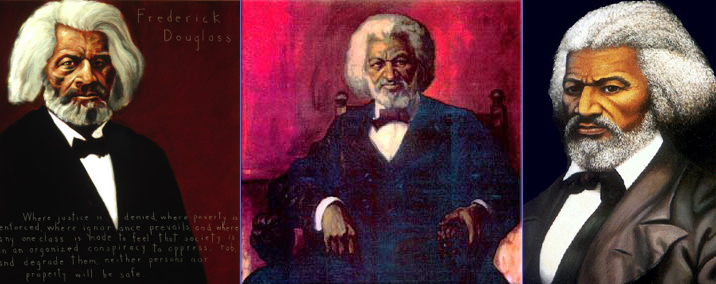
“I prefer to be true to myself, even at the hazard of incurring the ridicule of others, rather than to be false, and to incur my own abhorrence.”
~ Frederick Douglass
Wikiquote (Frederick_Douglass (born Frederick Augustus Washington Bailey (February 1818 – February 20, 1895) an American social reformer, orator, writer and statesman. After escaping from slavery, he became a leader of the abolitionist movement, gaining note for his dazzling oratory and incisive antislavery writing.)
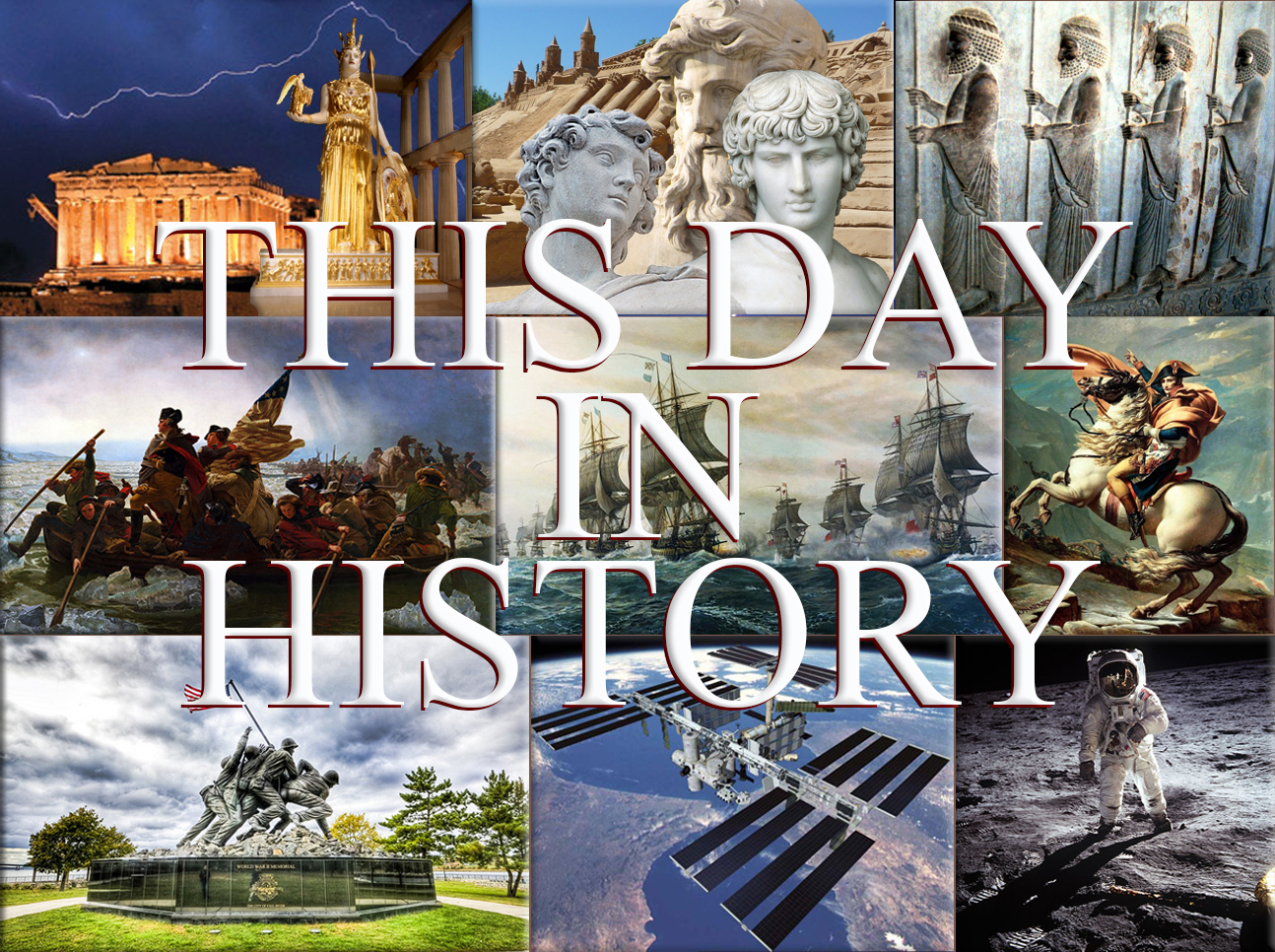
September 3rd, 36 BC
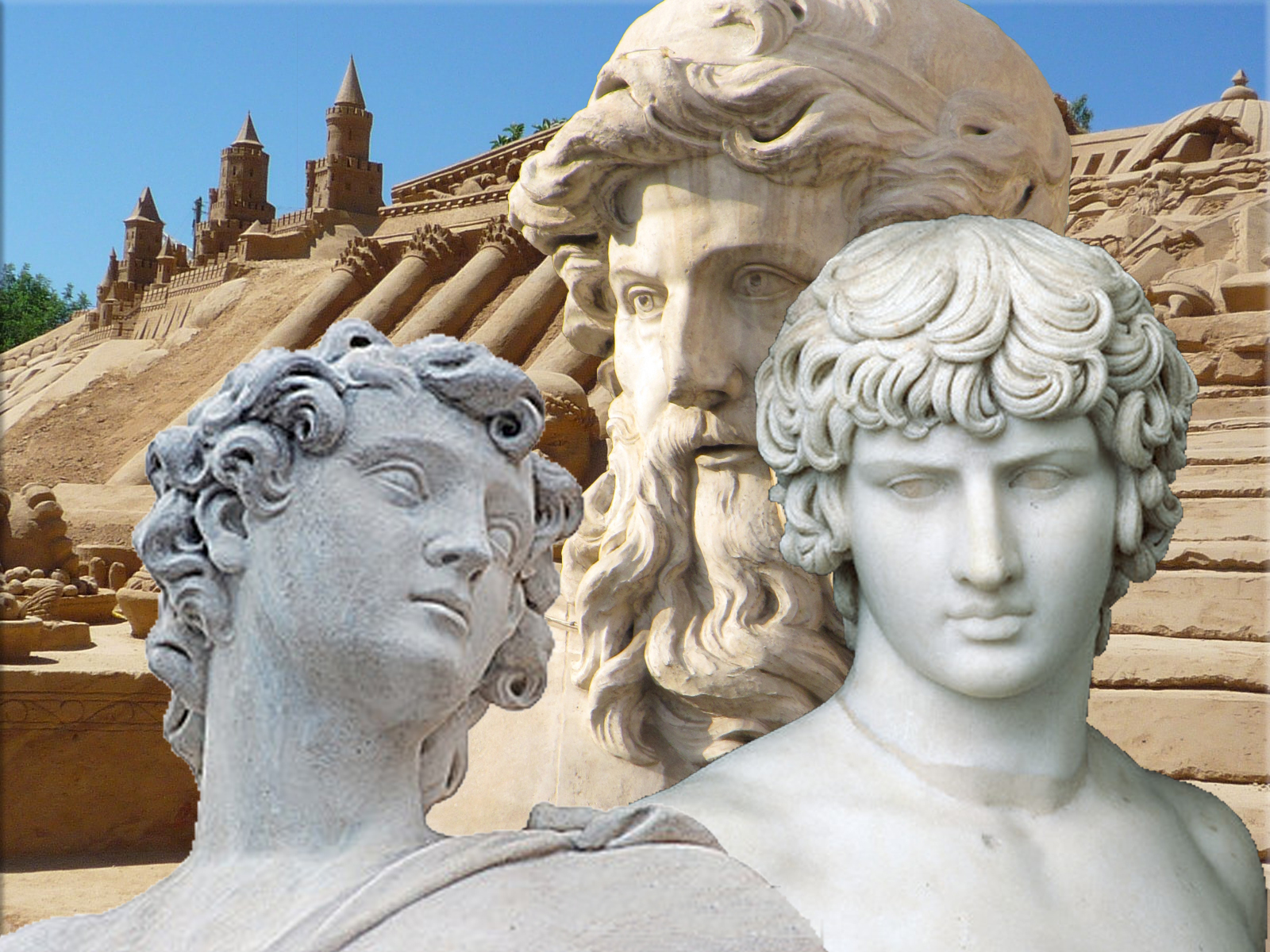
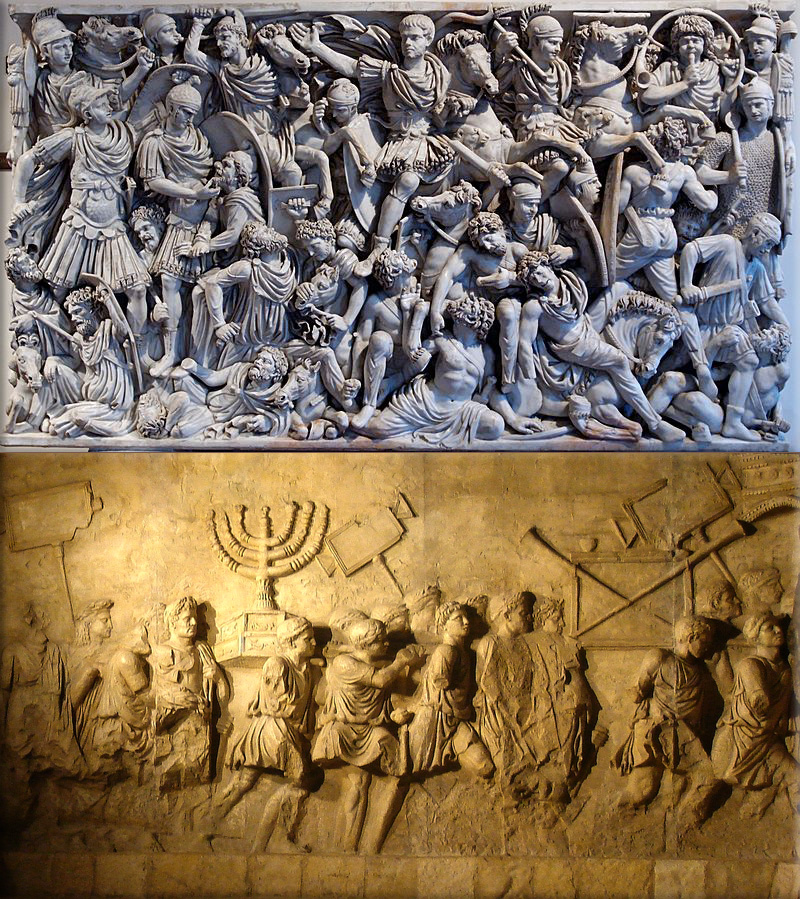
Roman Empire:
36 BC - Battle of Naulochus; Marcus Vipsanius Agrippa, admiral of Octavian, defeats Sextus Pompeius, son of Pompey, thus ending Pompeian resistance to the Second Triumvirate.
Wikipedia Photo: ● Ancient roman statue ● Detail of Head from Roman Statue of Antinous, credit Corbis ● Statue of Neptune, Trevi Fountain, Rome ● International Sand Sculpture Festival, FIESA 7 ancient Rome.
Relief from a 3rd-century sarcophagus depicting a battle between Romans and Germanic warriors; the central figure is perhaps the emperor Hostilian / Depiction of the Menorah on the Arch of Titus in Rome.
September 3rd, 301
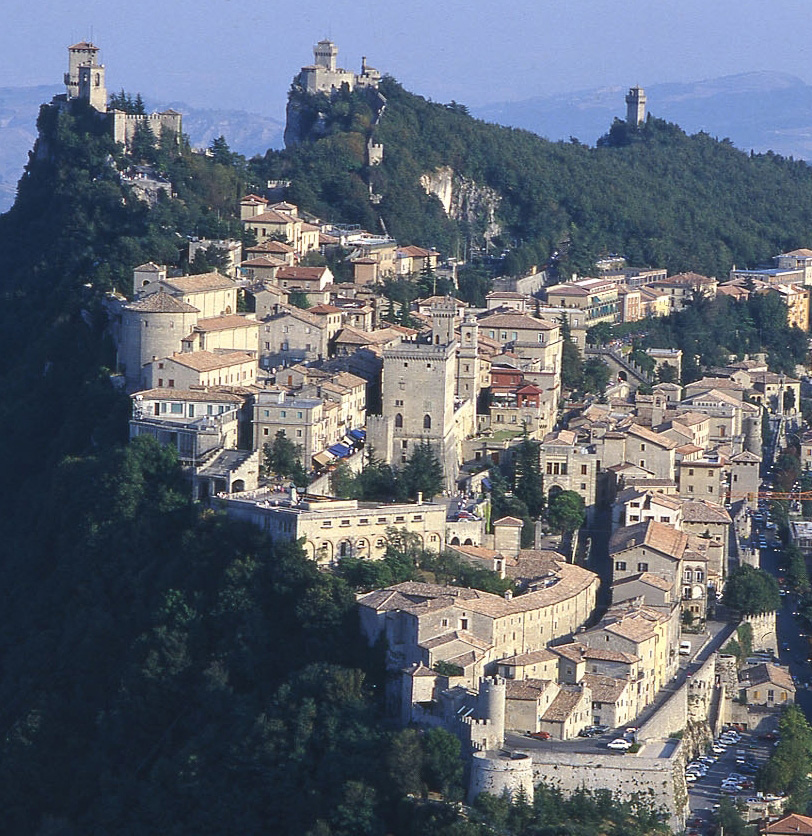
San Marino, one of the smallest nations in the world and the world's oldest republic still in existence, is founded by Saint Marinus.
Wikipedia Photo: San Marino
September 3rd, 590

Consecration of Pope Gregory I (Gregory the Great).
Wikipedia Painting: Pope Gregory
September 3rd, 863

Byzantine Empire (East Roman Empire):
863 - Battle of Lalakaon: Major Byzantine victory against an Arab raid.
Wikipedia Image: The Baptism of Constantine painted by Raphael's pupils (1520–1524, fresco, Vatican City, Apostolic Palace); Mural of Saints Cyril and Methodius, 19th century, Troyan Monastery, Bulgaria; Justinian I depicted on one of the famous mosaics of the Basilica of San Vitale, Ravenna; The Greek fire was first used by the Byzantine Navy during the Byzantine-Arab Wars (from the Madrid Skylitzes, Biblioteca Nacional de España, Madrid); Alexios I, founder of the Komnenos dynasty.
September 3rd, 1189
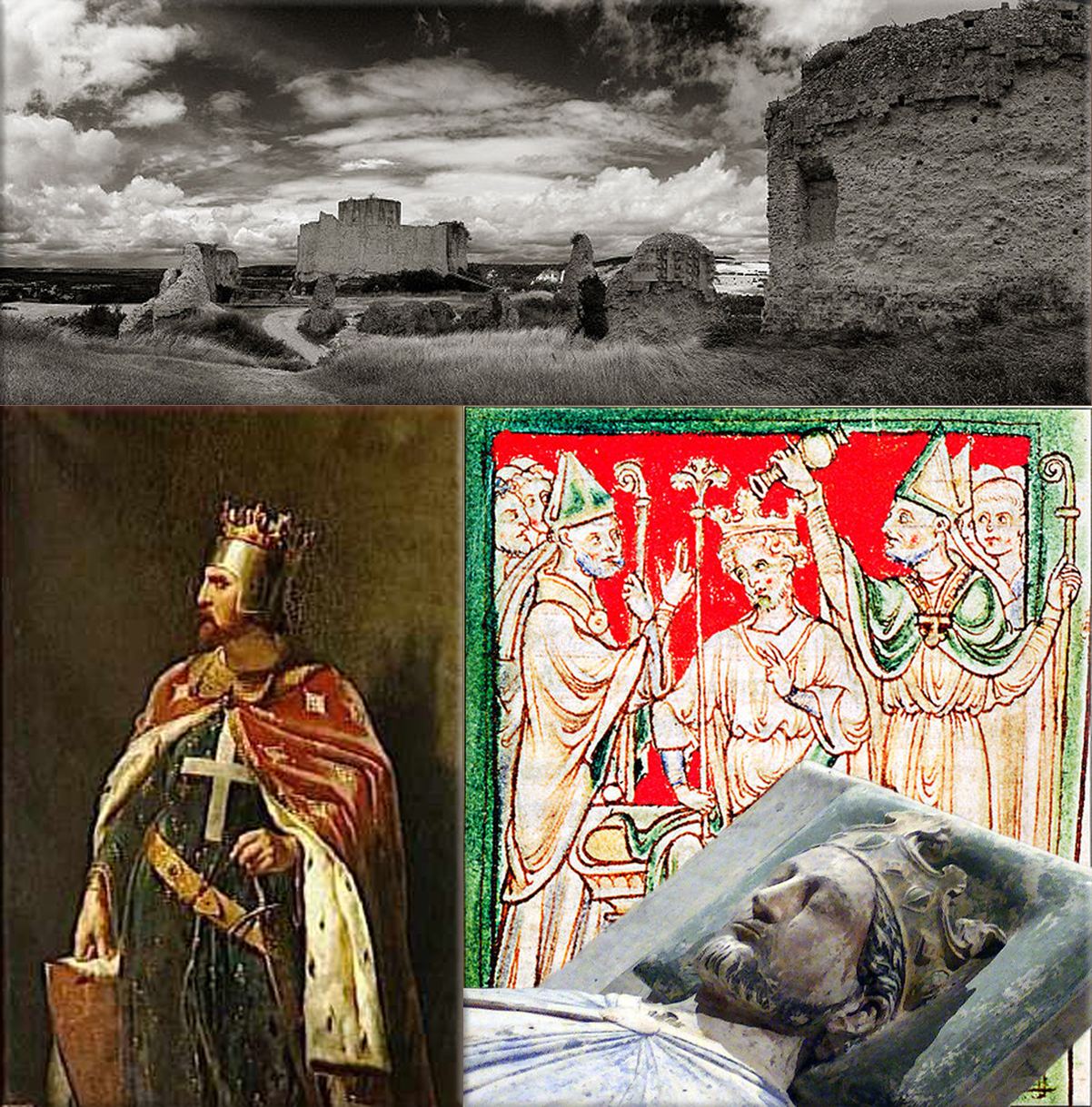
Richard I of England (Richard 'the Lionheart') is crowned at Westminster.
Wikipedia Image: Richard I of England: The ruins of Château Gaillard. Even a rain of blood – considered a bad omen – did not dissuade Richard from building his vast and expensive fortress in Normandy. ● 19th-century portrait of Richard by Merry-Joseph Blondel ● Richard I being anointed during his coronation in Westminster Abbey, from a 13th-century chronicle ● Effigy (1199) of Richard I at Fontevraud Abbey, Anjou.
September 3rd, 1260

Battle of Ain Jalut in Palestine: the Mamluks defeat the Mongols, marking their first decisive defeat and the point of maximum expansion of the Mongol Empire.
Wikipedia Painting: Richard I of England Sometimes known as "Richard the Lionheart" (Reigned July 6th, 1189 - April 6th, 1199)
September 3rd, 1650

English Civil War:
1650 - Battle of Dunbar; English Parliamentarian forces led by Oliver Cromwell defeat an army loyal to King Charles II of England and led by David Leslie, Lord Newark.
1651 - Battle of Worcester; is defeated in the last main battle of the war.
1658 - Richard Cromwell becomes Lord Protector of England.
Wikipedia Painting: English Civil War (1642–1651) was a series of armed conflicts and political machinations between Parliamentarians (Roundheads) and Royalists (Cavaliers);
John Milton publishes Areopagitica;
Battle of Naseby, victory of the Parliamentarian New Model Army;
Battle of Marston Moor, 1644;
"Cromwell at Dunbar", by Andrew Carrick Gow; Oliver Cromwell; King Charles I, painted by Van Dyck;
"And when did you last see your father?" by William Frederick Yeames.
September 3rd, 1666

Great Fire of London the Royal Exchange burns down.
Wikipedia Painting: Great Fire of London in September 1666.
September 3rd, 1777
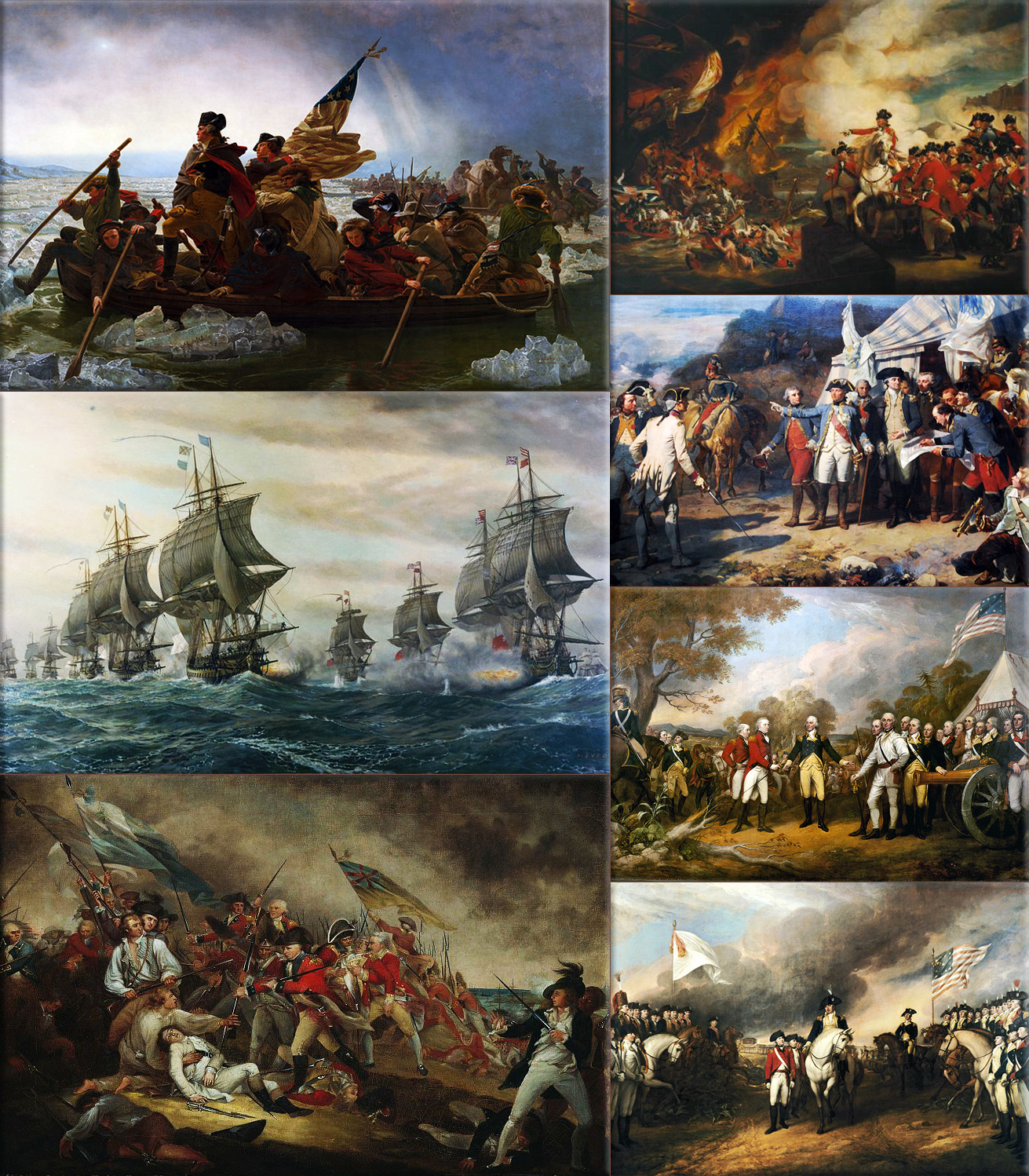

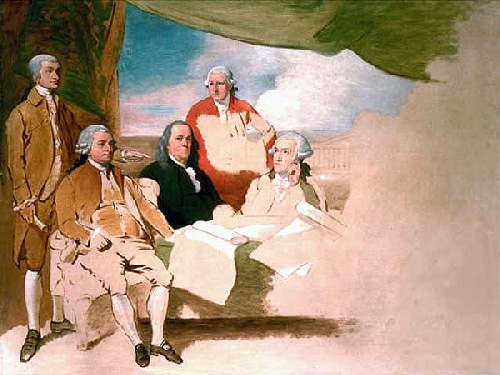
American Revolutionary War:
1777 - Battle of Cooch's Bridge; the Flag of the United States is flown in battle for the first time.
1783 - Treaty of Paris (1783); the war ends with the signing by the United States and the Kingdom of Great Britain.
Wikipedia Paintings: Washington Crossing the Delaware, by Emanuel Leutz; Battle of the Chesapeake, French (left) and British (right) lines; Battle of Bunker Hill, The Death of General Warren at the Battle of Bunker Hill by John Trumbull; The Defeat of the Floating Batteries at Gibraltar, September 13, 1782, by John Singleton Copley; Washington and the Comte de Rochambeau at Yorktown, 1781; "The surrender at Saratoga" shows General Daniel Morgan in front of a French de Vallière 4-pounder; Surrender of Cornwallis at Yorktown by (John Trumbull, 1797).
● Betsy Ross presenting the first American flag to George Washington, by Edward Percy Moran.
● Benjamin West's painting of the delegations at the Treaty of Paris: John Jay, John Adams, Benjamin Franklin, Henry Laurens and William Temple Franklin. The British delegation refused to pose, and the painting was never completed.
September 3rd, 1798


French Revolutionary Wars / Napoleonic Wars:
1798 - Battle of Saint George's Caye: begins between Spain and Britain off the coast of Belize.
Wikipedia Painting: Battle of Trafalgar: The British HMS Sandwich fires to the French flagship Bucentaure (completely dismasted) in the battle of Trafalgar;
Napoleon in Berlin (Meynier). After defeating Prussian forces at Jena, the French Army entered Berlin on 27 October 1806;
Battle of the Bridge of Arcole Napoleon Bonaparte leading his troops over the bridge of Arcole, by Horace Vernet;
Napoleon as King of Italy (Appiani);
Napoleon Crossing the Alps (David). In 1800 Bonaparte took the French Army across the Alps, eventually defeating the Austrians at Marengo;
Charge of the Russian Imperial Guard cavalry against French cuirassiers at the Battle of Friedland, 14 June 1807;
Battle of Borodino as depicted by Louis Lejeune. The battle was the largest and bloodiest single-day action of the Napoleonic Wars;
Napoleon's withdrawal from Russia, a painting by Adolph Northen;
Wellington at Waterloo by Robert Alexander Hillingford;
Napoleon is often represented in his green colonel uniform of the Chasseur à Cheval, with a large bicorne and a hand-in-waistcoat gesture.
Battle of Saint George's Caye; by Edward Lowe.
September 3rd, 1802
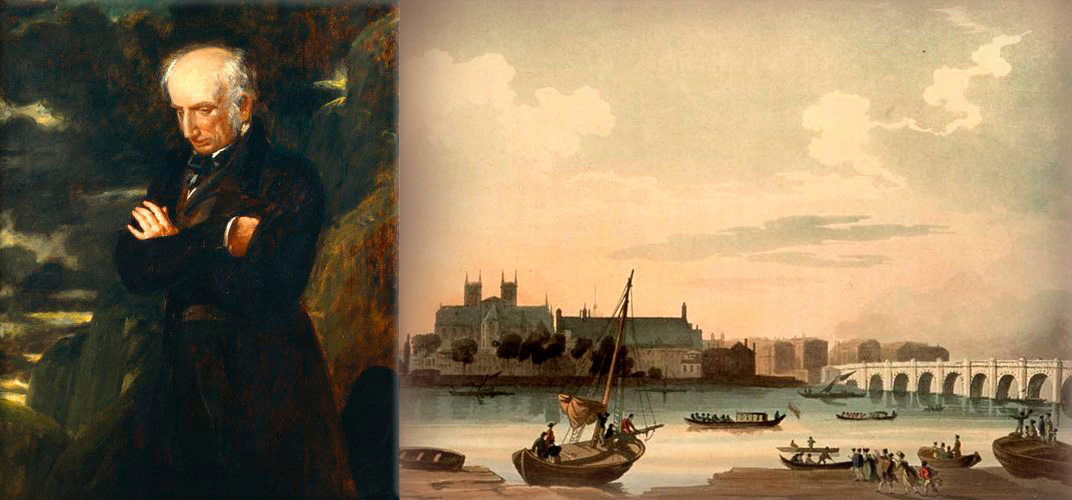
William Wordsworth composes the sonnet Composed upon Westminster Bridge, September 3, 1802.
Wikipedia Painting: Portrait of William Wordsworth by Benjamin Robert Haydon (National Portrait Gallery) / Westminster Bridge as it appeared in 1808.
September 3rd, 1803
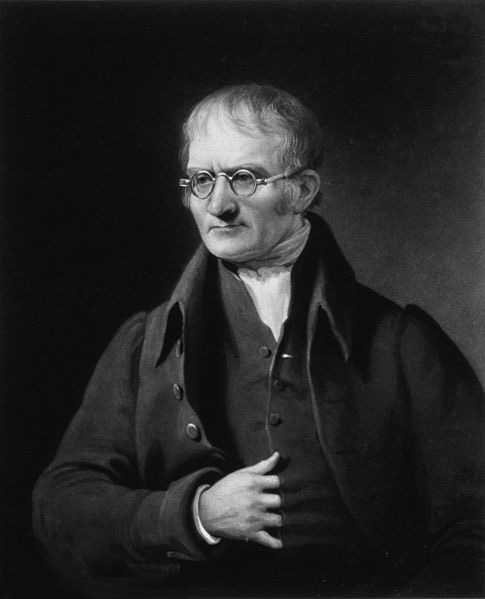

English scientist John Dalton begins using symbols to represent the atoms of different elements.
Wikipedia Painting: Portrait of William Wordsworth by Benjamin Robert Haydon (National Portrait Gallery) / Westminster Bridge as it appeared in 1808.
Image: Periodic table is a tabular display of the chemical elements, organized on the basis of their atomic numbers, electron configurations, and recurring chemical properties (Elements are presented in order of increasing atomic number).
September 3rd, 1855
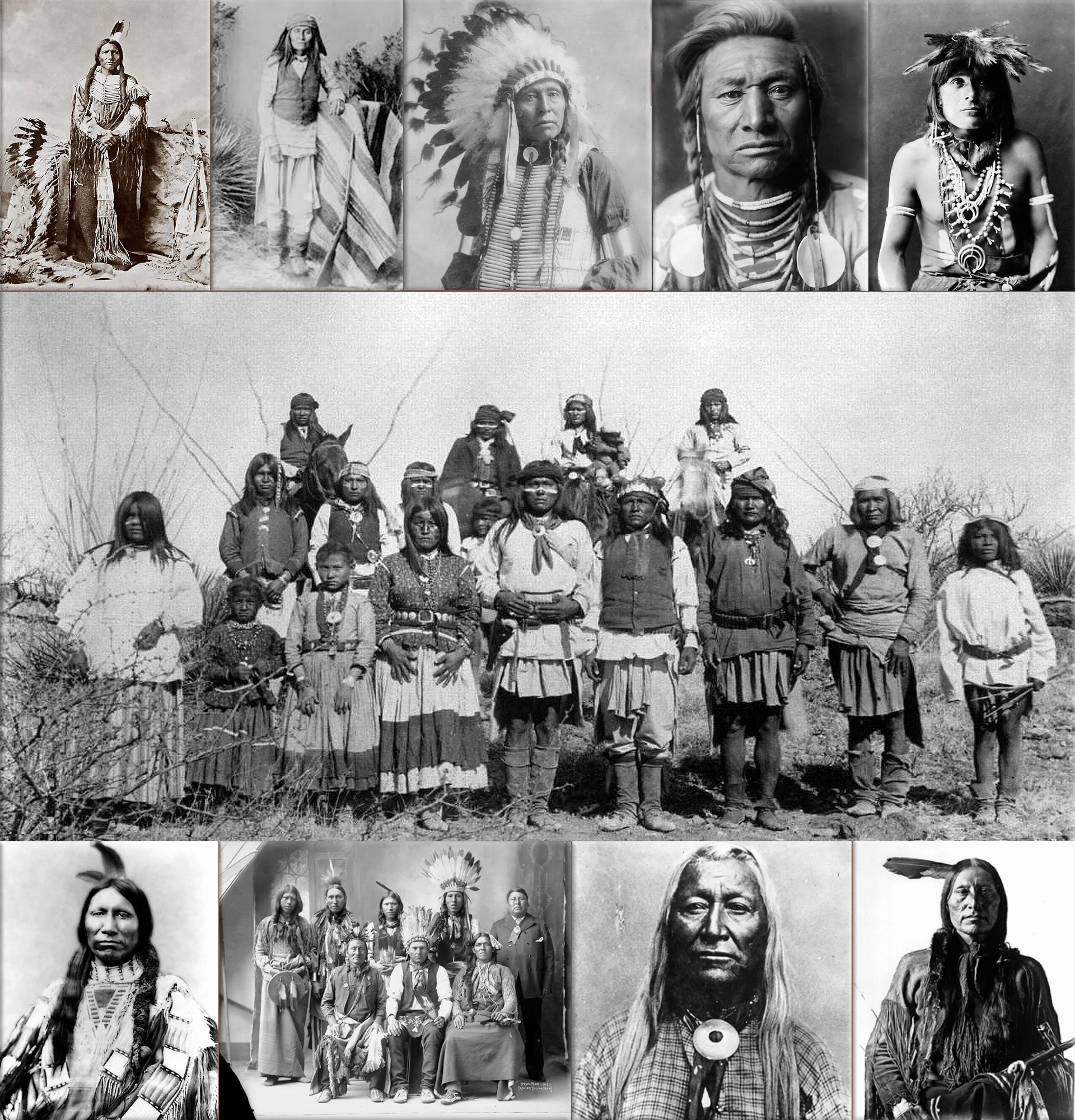
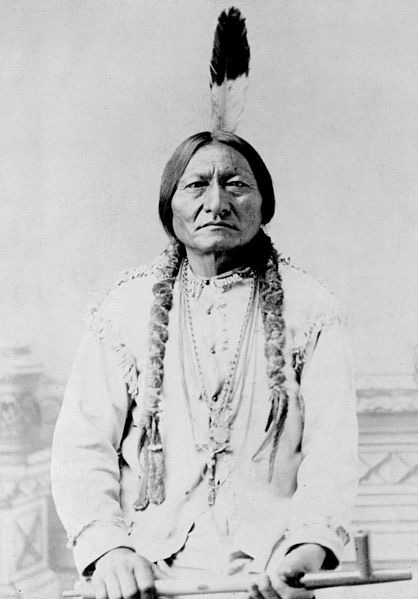
American Indian Wars:
1855 - In Nebraska, 700 soldiers under United States General William S. Harney avenge the Grattan Massacre by attacking a Sioux village and killing 100 men, women and children.
Wikipedia Photos: American Indians - Chief Crazy Horse, Tashunca-uitco (1849 - 1877) ● Geronimo Apache Chief (1829 - 1909) ● Indian Chief 'Two Eagles'; Crow Indian Chief ● Snake Cheif ● Band of Chiricahua Apache Indians, followers of legendary renegade Geronimo, attending a peace negotiation after a long struggle against U.S. government attempts to force them onto reservations - Tombstone, Arizona (1886), Life Magazine ● American Horse - Oglala ● Native American Arapaho Indian ● Washakie, Shoshone leader ● Arapaho American Indian Chief.
● Sioux Očhéthi Šakówiŋ; Sitting Bull, a Hunkpapa Lakota chief and holy man, 1885.
September 3rd, 1861
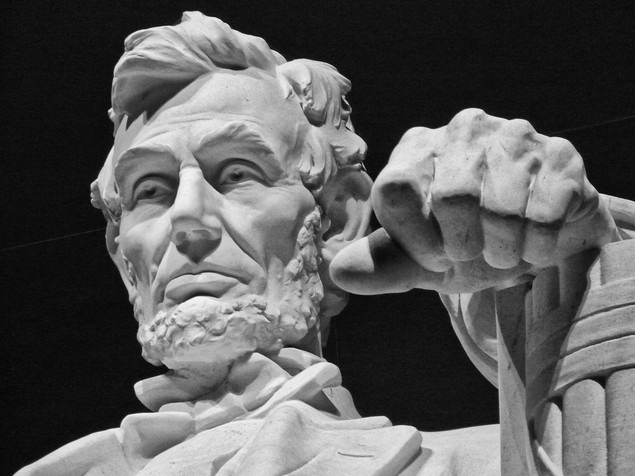
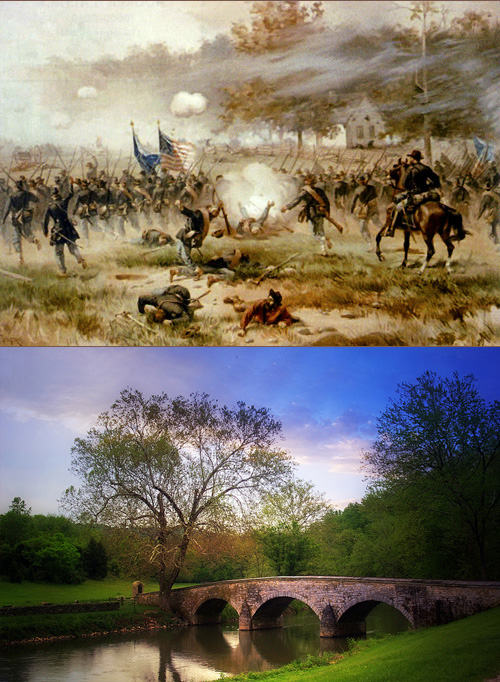
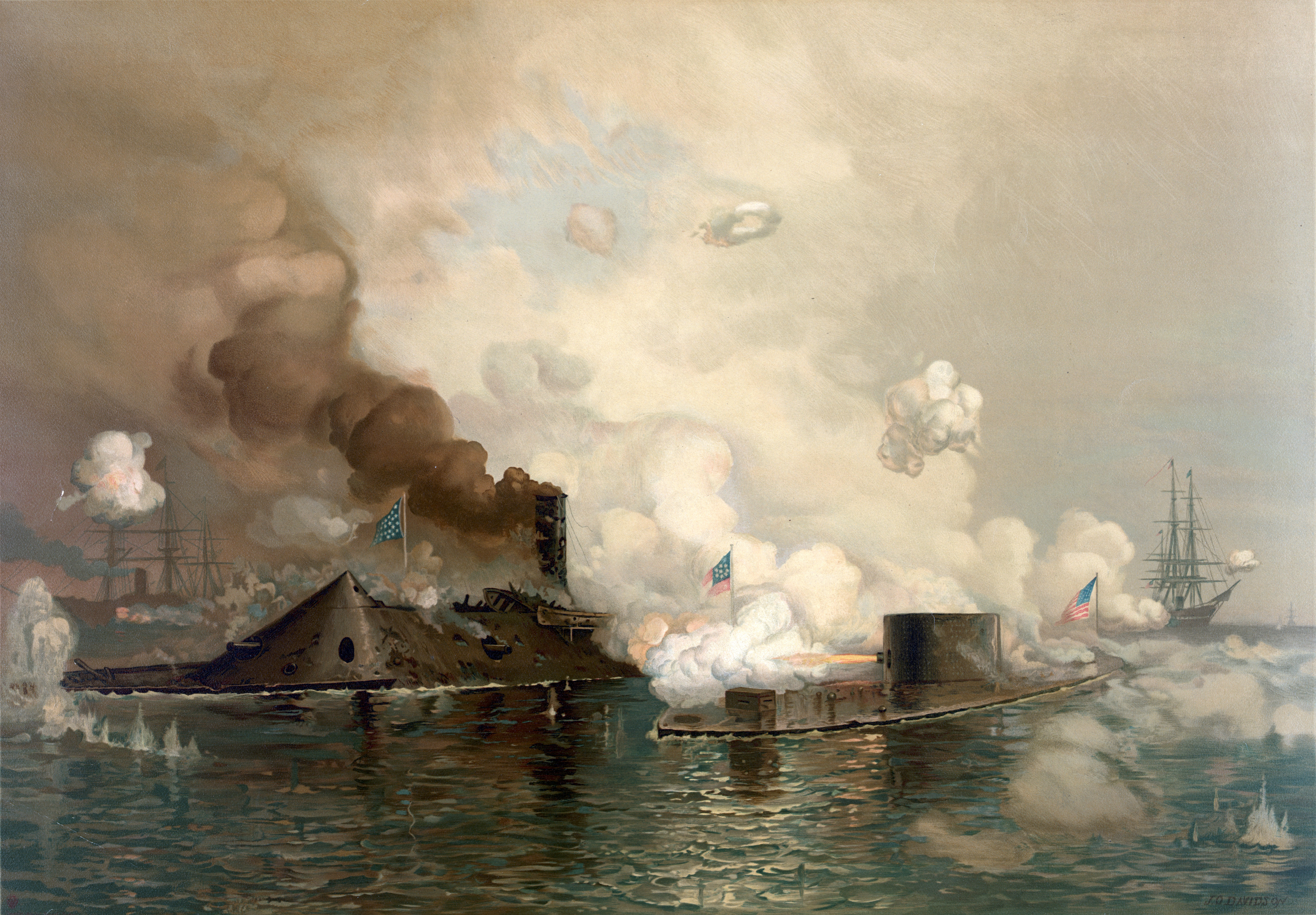
American Civil War:
1861 - Confederate General Leonidas Polk invades neutral Kentucky, prompting the state legislature to ask for Union assistance.
Wikipedia Image: ● Lincoln Memorial; an American national monument built to honor the 16th President of the United States, Abraham Lincoln - located on the National Mall in Washington, D.C. across from the Washington Monument.
● The northern army led by George McClellan and the southern army led by Robert E. Lee met at Antietam Creek, Maryland in September, 1862. It was a bloody battle where 13,000 Confederates and 12,000 Union troops died in just one day. McClellan had hesitated to attack before the battle thus letting the southern troops regroup. Also, he had saved reserves and refused to use them at the end of the battle thinking that Lee was holding reserves for a counterattack, even though those reserves didn't exist. The Union victory stopped Lee's northward advance and was a turning point in the war.
● Battle of Antietam / Stone Bridge at Antietam Battlefield - Sharpsburg, Maryland
● First Battle Between Ironclads: CSS Virginia/Merrimac (left) vs. USS Monitor, in 1862 at the Battle of Hampton Roads.
● Although photography was still in its infancy, war correspondents produced thousands of images, bringing the harsh realities of the frontlines to those on the home front in a new and visceral way. The Atlantic.
September 3rd, 1870
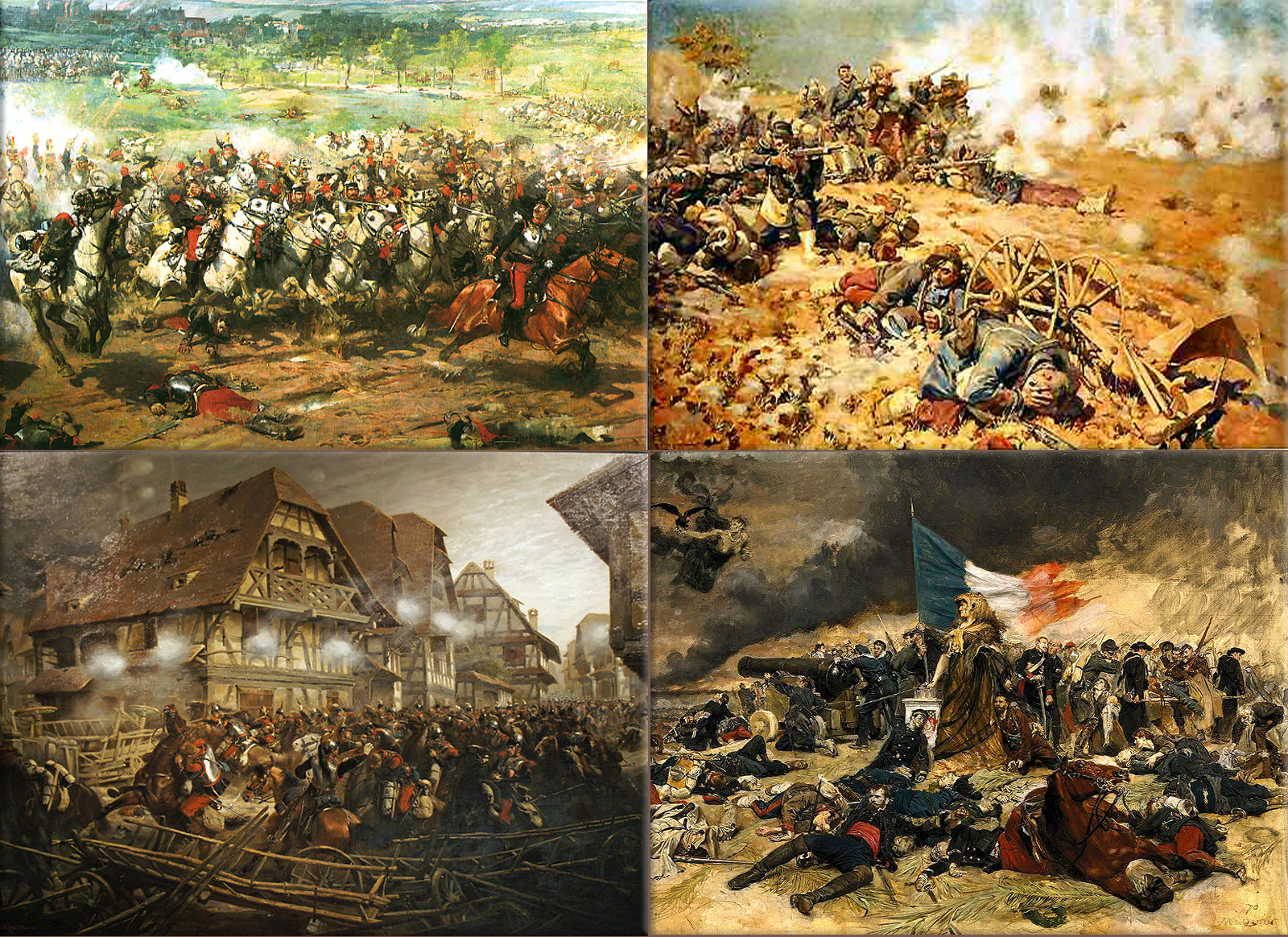
Franco-Prussian War:
1870 - Battle of Sedan; Prussian forces take Napoleon III of France and 100,000 of his soldiers prisoner.
Wikipedia Painting: Aimé Morot's La bataille de Reichshoffen, 1887 ● Battle of Spicheren (August 5th, 1870) ● Battle of Wörth (August 6th, 1870) ● The Siege of Paris, by Jean-Louis-Ernest Meissonier.
September 3rd, 1935

Sir Malcolm Campbell reaches a speed of 304.331 miles per hour on the Bonneville Salt Flats in Utah, becoming the first person to drive an automobile over 300 mph.
Wikipedia Photo: Malcolm Campbell (hatless) stands with an interviewer beside Bluebird, one of his record-breaking speedsters. Corbis
September 3rd, 1939
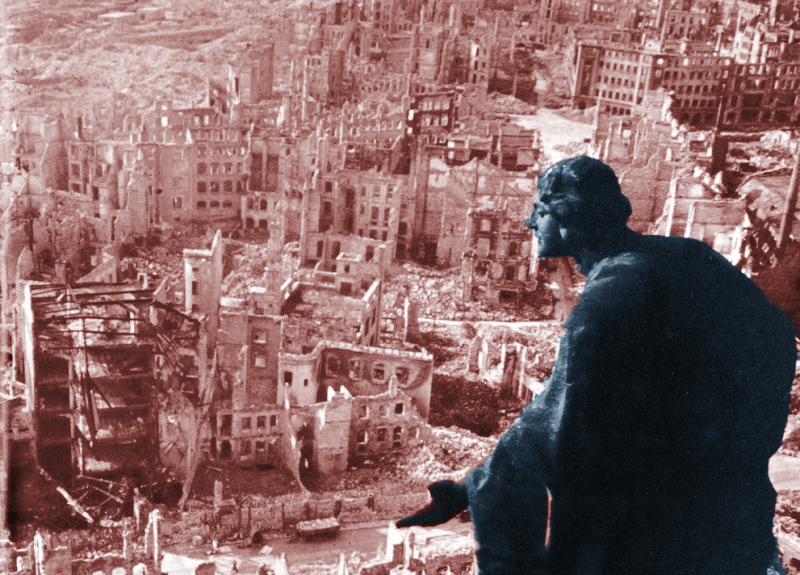

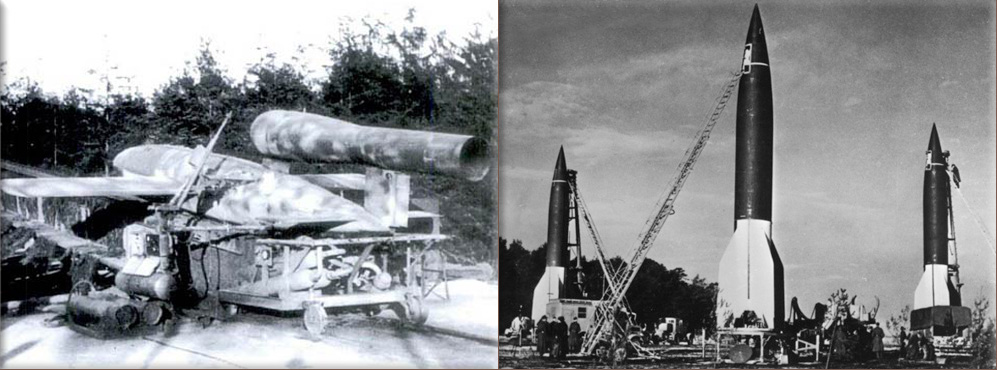
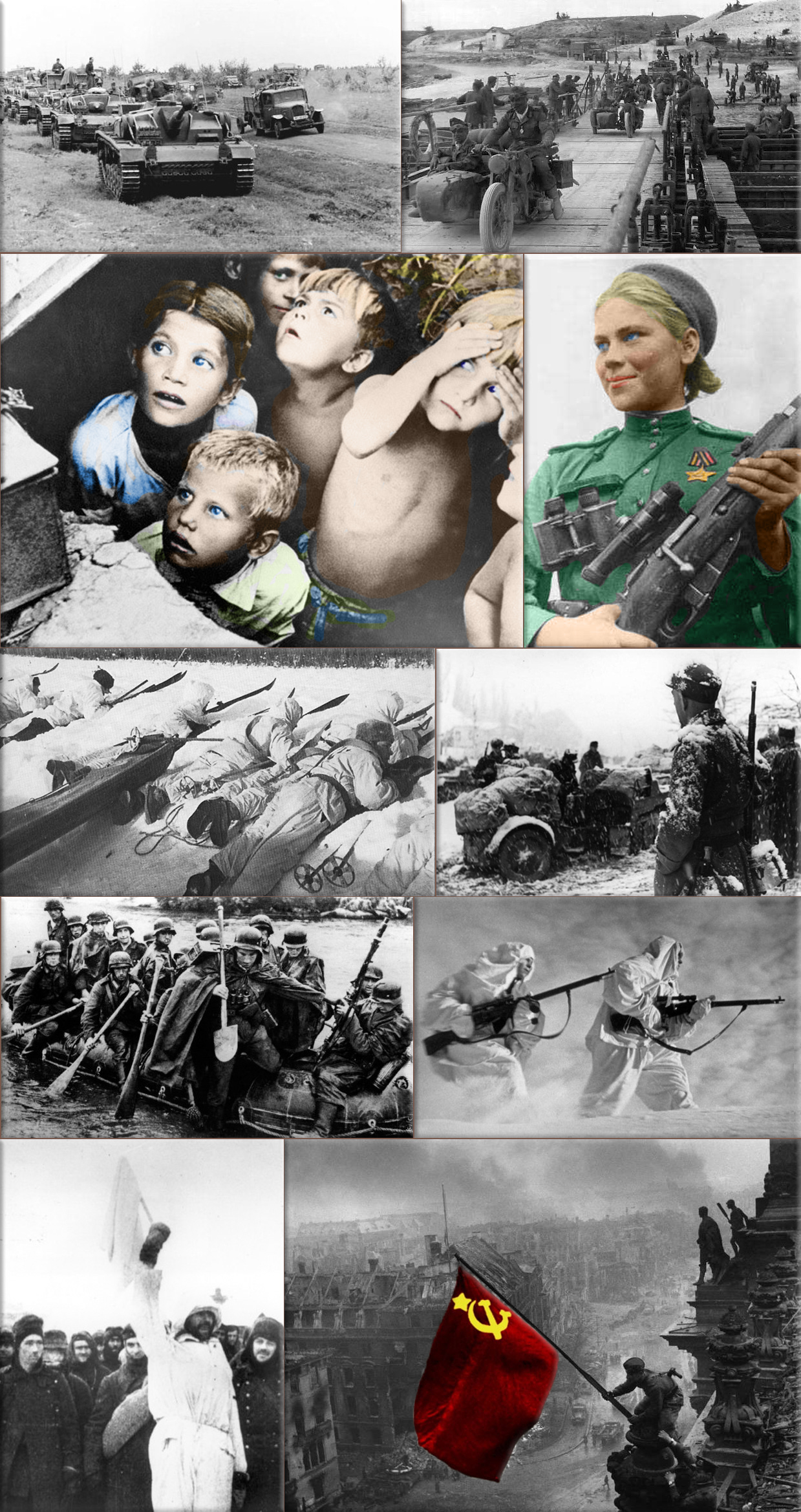
World War II:
1939 - Invasion of Poland; France, the United Kingdom, New Zealand and Australia declare war on Nazi Germany, forming the Allies.
1939 - Battle of the Atlantic; the United Kingdom and France begin a naval blockade of Germany that lasts until the end of the war.
1943 - Allied invasion of Italy begins.
1945 - Victory over Japan Day Three-day celebration was held in China, following the Victory over Japan Day on September 2.
Wikipedia Photo: Bombing of Dresden in World War II; August Schreitmüller's sculpture 'Goodness' surveys Dresden after a firestorm started by Allied bombers in 1945. USS Bunker Hill was hit by kamikazes piloted by Ensign Kiyoshi Ogawa and another airman on 11 May 1945. 389 personnel were killed or missing from a crew of 2,600; Ensign Kiyoshi Ogawa, who flew his aircraft into the USS Bunker Hill during a Kamikaze mission on 11 May 1945; Kamikaze Missions - Lt Yoshinori Yamaguchi's Yokosuka D4Y3 (Type 33 Suisei) "Judy" in a suicide dive against USS Essex. The dive brakes are extended and the non-self-sealing port wing tank is trailing fuel vapor and/or smoke November 25th, 1944. German V1 flying-bomb and V2 Rockets - Preparations for a Salvo Launch of V-2 Rockets in the Heidelager near Blizna (Poland) (1944), credit German History in Documents and Images GHDI.
Eastern Front (World War II); Germans race towards Stalingrad. August 1942; Soviet children during a German air raid in the first days of the war, June 1941, by RIA Novosti archive; Soviet sniper Roza Shanina in 1944. About 400,000 Soviet women served in front-line duty units Caucasus Mountains, winter 1942/43; Finnish ski patrol: the invisible enemy of the Soviet Army with an unlimited supply of skis; Men of the German Engineers Corps cross a river which is swollen after the first autumn rains, to strengthen bridges linking the German positions on the central front in Russia. by Keystone / Getty Images. October 1942; Russian snipers fighting on the Leningrad front during a blizzard. Photo by Hulton Archive / Getty Images, 1943; German soldiers surrendering to the Russians in Stalingrad, the soldier holding the white flag of surrender is dressed in white so that there could be no doubt of his intentions, a Russian soldier is on the right of the photograph. by Keystone / Getty Images, January 1943.
September 3rd, 1941
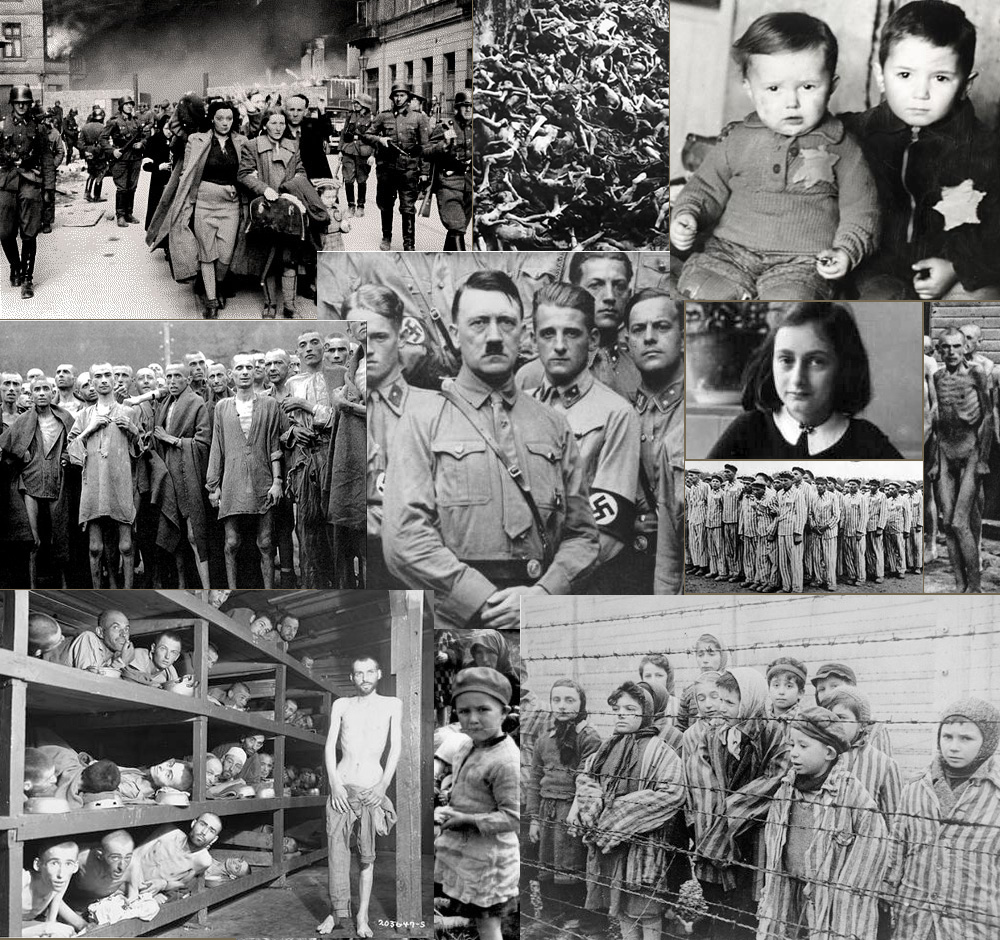
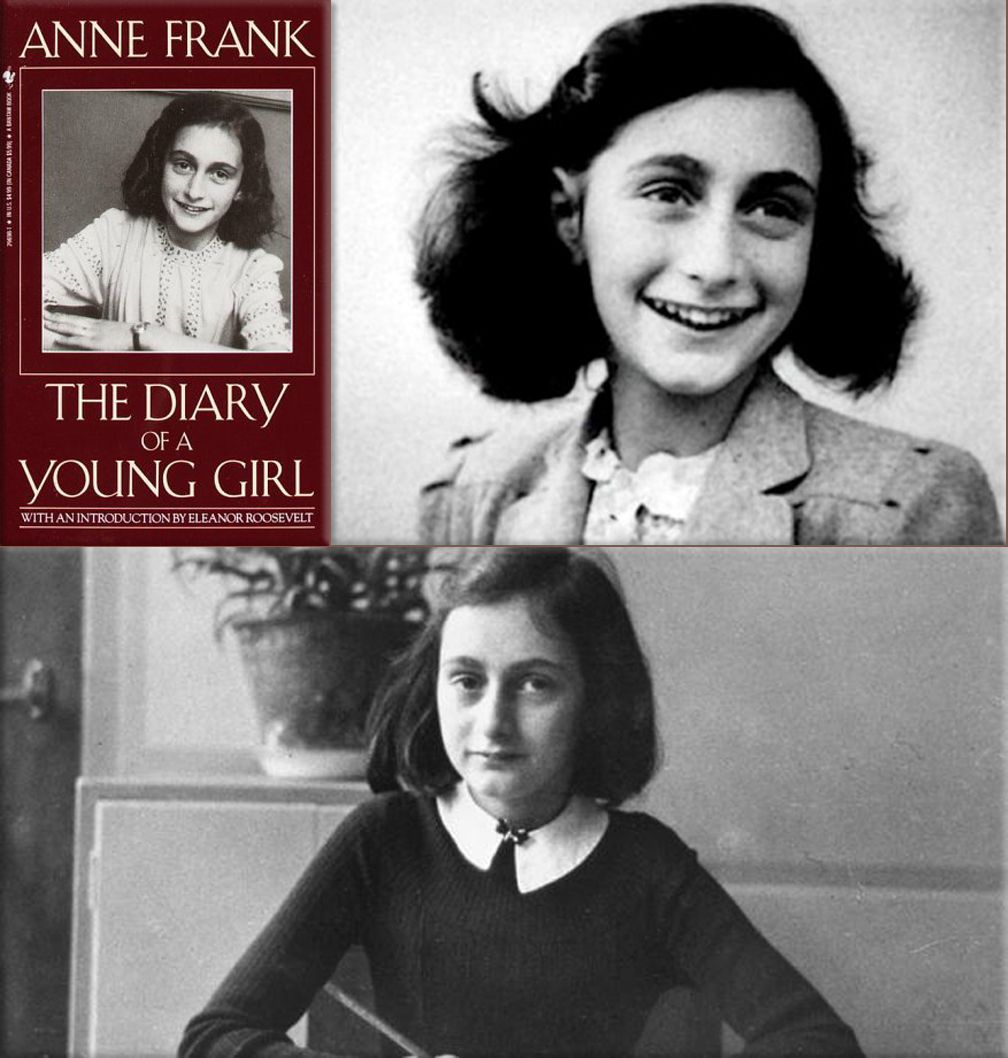
World War II: Holocaust;
1941 - Karl Fritzsch, deputy camp commandant of the Auschwitz concentration camp, experiments with the use of Zyklon B in the gassing of Soviet POWs.
1942 - In response to news of its coming liquidation, Dov Lopatyn leads an uprising in the Ghetto of Lakhva, in present-day Belarus.
1944 - Diarist Anne Frank and her family are placed on the last transport train from the Westerbork transit camp to the Auschwitz concentration camp, arriving three days later.
Wikipedia Photo: World War II, The Holocaust. Sources: United States Holocaust Memorial Museum USHMM, History 1900s, Internet Masters of Education Technology IMET, Techno Friends, Veterans Today, Concern. Anne Frank; (Annelies 'Anne' Marie Frank, June 12, 1929 – early March 1945) was one of the most discussed Jewish victims of the Holocaust. (Her diary has been the basis for several plays and films.)
September 3rd, 1951

Search for Tomorrow: The first long-running American television soap opera, airs its first episode on the CBS network.
Wikipedia Photo: Search for Tomorrow ©
September 3rd, 1954
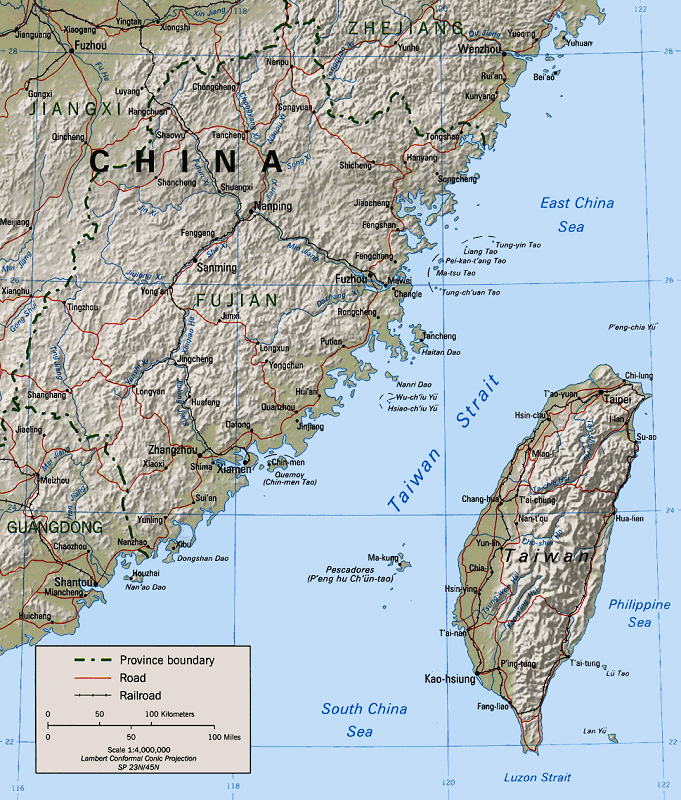
First Taiwan Strait Crisis: The People's Liberation Army begins shelling the Republic of China-controlled islands of Quemoy.
Wikipedia Map: Taiwan Strait
September 3rd, 1976

Viking program: The American Viking 2 spacecraft lands at Utopia Planitia on Mars.
Wikipedia Image: Artist conception Viking 2 spacecraft at Utopia Planitia on Mars
September 3rd, 1997

Aviation accidents and incidents:
1997 - Vietnam Airlines Flight 815 (Tupolev Tu-134) crashes on approach into Phnom Penh airport, killing 64.
Wikipedia Photo: ● Pan AM 747 ● U.S. Airways flight 1549 also known as the "Miracle on the Hudson" navigates an exit ramp near Burlington, New Jersey, June 5, 2011 ● Passengers stand on the wings of a U.S. Airways plane as a ferry pulls up to it after it landed in the Hudson River in New York, Reuters ● U.S. Airways plane crashes into New York Hudson River, Photo: AP
September 3rd, 2004

Modern conflicts in the Middle East, social unrest and terrorist attacks:
2004 - Beslan school hostage crisis; day 3: the Beslan hostage crisis ends with the deaths of over 300 people, more than half of which are children.
1987 - Burundian coup d'état; President Jean-Baptiste Bagaza is deposed by Major Pierre Buyoya
Wikipedia Photo: Middle East satellite image, NASA. ● Camels are seen early morning on a beach in the Marina area of Dubai October 16, 2008. (Steve Crisp, Reuters) ● A portrait of Syrian President Bashar al-Assad burns during clashes between rebels and Syrian troops in Selehattin, near Aleppo, on July 23, 2012. (Bulent Kilic, AFP / GettyImages) ● Egyptians gather in their thousands in Tahrir Square to mark the one year anniversary of the revolution on Jan. 25, 2012 in Cairo Egypt. Tens of thousands have gathered in the square on the first anniversary of the Arab uprising which toppled President Hosni Mubarak. (Jeff J Mitchell, Getty Images) ● Black smoke rises above the Tehran skyline as supporters of Mir Hossein Mousavi burn tires and other material in the streets as they fight running battles with police to protest the declared results of the Iranian presidential election in Tehran, Iran, Saturday, June 13, 2009. (Ben Curtis, AP) ● The Iron Dome defense system fires to interecpt incoming missiles from Gaza in the port town of Ashdod, Thursday, Nov. 15, 2012. (Tsafrir Abayov, AP)
September 3rd, 2017

North Korean nuclear test: North Korea conducts its sixth and most powerful nuclear test.
Wikipedia Image: Ri Chun-hee broadcasting on North Korea TV
